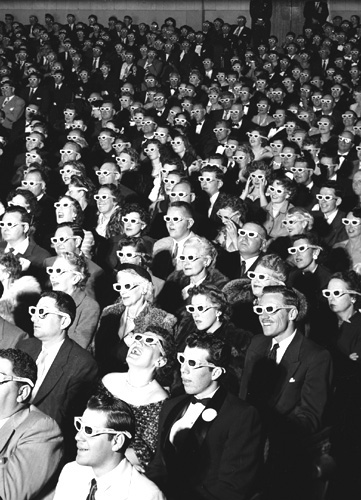In this case, it's not that the main character has never been to this place before, it's that she can't remember it. Alice in Wonderland is actually a sequel of sorts to Lewis Carroll's books Alice's Adventures in Wonderland and Through the Looking Glass, echoing the likes of Return to Oz and Spielberg's oft-reviled Hook. The title, in fact, is a misnomer - Alice in Underland would have been more accurate (that's what the characters call the wondrous yet now dishevelled place they inhabit). The sequel idea is a relatively clever conceit that can accommodate both newcomers to the story and those familiar with the world already, but here it's not really capitalised on. Even for a viewer not versed in the Carroll originals, much of their iconography is indelible due to generations of visual depictions. This go-round of the classic fable just seems like a Greatest Hits compendium or a theme park ride through Wonderland - here a smoking caterpillar, there a floating, smiling cat - all of it vaguely familiar. It never forges a plot of its own; it's more like a simple join-the-dots exercise. As such, it never achieves any sort of real engagement beyond a surface "isn't it pretty" one.
Is a striking visual sense enough for a film to get by? Commercially, perhaps, but we should expect more from Tim Burton. All of the cast are at the mercy of the graphics, so few forge their own characters (many of them only make fleeting appearances anyway, like Matt Lucas' Tweedles Dee and Dum). The above-the-title Depp is amusing as the Scottish Mad Hatter, but little more. Helena Bonham Carter is good value as central villain the Red Queen, and Anne Hathaway as her opposite number the White Queen glides across the scenery with clever mannerisms. Of those who only lend their voices, Stephen Fry is easily the best, perfectly cast as the Cheshire Cat.
In the lead role, Aussie newcomer Mia Wasikowska presents a something of a dichotomy: there's clearly the sort of intelligence and spark behind her eyes that distinguishes the more talented young actresses, but she never really gets to exhibit it. Her Alice, perhaps because of the script, is bland and lifeless (visually, too: her makeup is a ghostly pale white throughout). Most of the time she's a passive protagonist, watching the events that occur rather than influencing them. The only time that really changes is in the action finale, an obligatory skirmish between two opposing armies, in which she takes on the Jabberwocky as has been prophesised earlier (there's always a prophesy involved these days). The showdown feels perfunctory and uninspired, despite being visually impressive. The same could be said for most of the film. It's sad to say that of all the reasons that could be suggested for Alice's surprisingly huge success, one attribute seems to have been irrelevant: quality.
 Presentation
PresentationEven though it's only available (for now) in two dimensions, there's no denying that Alice looks the business. Ironically, there's a certain flatness to the CGI environs and Alice herself sometimes does not seem to exist within the same plane, but overall the effects are convincing and excellently delivered on Blu-ray. The DTS-HD really gets thumping in the action sequences, perhaps overpoweringly so, but the soundscape is rendered faithfully.
Extras
An ungenerous selection of extras indicates a future 3D special edition is on the horizon. There are three featurettes here, only 8 minutes long each. They look at the Mad Hatter, Alice herself, and the effects, but are only brief glimpses into a protracted production process. Following the now-usual practice for Disney releases, this is available in a Blu-ray/DVD combi-pack, or one which also has a digital copy disc.

Summary
The sixth film ever to reach $1 billion is also easily the worst. There's fun to be had with Alice, especially for children and those with low expectations, but it's less than the sum of its parts.

















